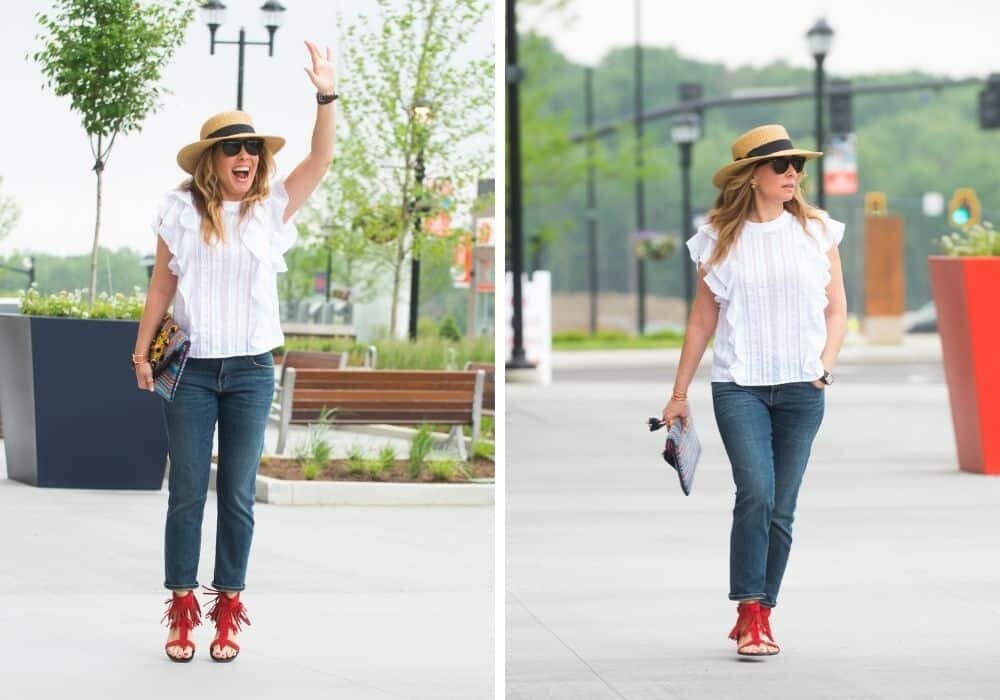The Fashion Rule of ONE
Fashion Rules
Fashion rules. Some love them. Some hate them. To me, it doesn’t matter if you follow them or if you don’t. If you’re happy and comfortable with what you’re wearing and how you’re wearing it, THAT IS WHAT MATTERS. In fact, that is all that matters. But, some people just like a rule. It provides parameters and makes it easier to take on something that feels challenging. So, if you like a good rule here or there, this is for you. If you’re a rebel, a rule-breaker, or just quite content with what you’re wearing, you can stop reading now, and I’ll catch you next time. No hard feelings, promise.
How to Get Your Outfits Over the Finish Line
I hear this often with new 1:1 wardrobe styling clients… “Hallie, when I get dressed, my outfits are 80% of the way there, and then something goes wrong. It’s hard to pinpoint where. I like the pieces separately, but together not as much. Something is off, but I can’t seem to fix it. And buying more isn’t helping.” If you don’t know what the problem is, it’s hard to correct, right? And just ignoring that unsettled feeling or buying more clothes doesn’t fix it either. So, coming at you another (hopefully) helpful fashion rule, to take the guesswork out of getting dressed.
The Rule of One
If you’re a Star Wars fan, please know this is not the Sith Rule of One. To be honest, I’m not sure I even understand that Rule of One, aka Palpatine’s Doctrine. I googled it yet; it seems like a foreign language (even though it’s in plain English). It’s highly possible that if you understand the Star Wars Rule of One, my fashion Rule of One will sound equally foreign to you. And I completely understand and respect that. If we were all the same, the world would be so dull. So embrace the stuff that makes you, you. I geek out over fashion stuff and am letting my style nerd flag wave high. You let yours do the same!
The Fashion Rule of One
Fashion formulas help you put your best foot forward. Mine are not groundbreaking or overly complicated. Instead, they’re a simple approach to help your outfits hit the mark. The overarching theme of the Rule of One is that your ensemble should focus on one element to allow that detail to be the outfit’s true hero.
SKIN – Show ONE Area of Skin at a Time
Women of a certain age often question if they’re dressing appropriately. Being selective about the skin that is showing can be the solution. Too much can feel young, maybe even a tad tawdry. And being all covered up might read overly modest. The key is to focus on just one area of the body to be more exposed and allow the rest to stay concealed.
For example, if wearing a short skirt, don’t reveal as much on top. Wear a longer sleeve blouse or jacket to balance out the legs on display. And conversely, a strapless top is elevated when paired with pants or a midi skirt. Choose one area of the epidermis to be the focus and let the rest stay under wraps and mysterious. Too much confuses the viewer. They don’t know where to look. Being strategic about the quality and quantity of skin that’s bared allows what is revealed to shine.
FIT – Balanced Proportions – Only Go Snug (or Loose) in ONE Area
Wearing tight, bodycon clothing on both the top and bottom can look dated and feel brazen. And conversely, oversized pieces can appear sloppy and add girth if not balanced by a slimmer silhouette. Picking one piece to be close-fitting and the other to billow creates visual equity and harmony. Think skinny jeans with a slouchy top. Or a bodysuit matched with wide-leg trousers. If one part is form-fitted, the other should be less constrained. Again, it’s the rule of ONE.
COLOR – Play with ONE color
If you default to donning black most of the time, wearing colors can be scary. Try to pick just one piece, in one color, and keep the rest of the outfit neutral. Adding just a pop of color, be it an accessory or a sweater, permits that one piece to be the show stopper. While simultaneously allowing the wearer to feel subtle in their use of color. Combining hued elements with your more vanilla stand bys makes the color infusion more do-able. If and when you get more pigment confident, you can add in multi-colored combinations. But until then, stick to one piece, one color.

